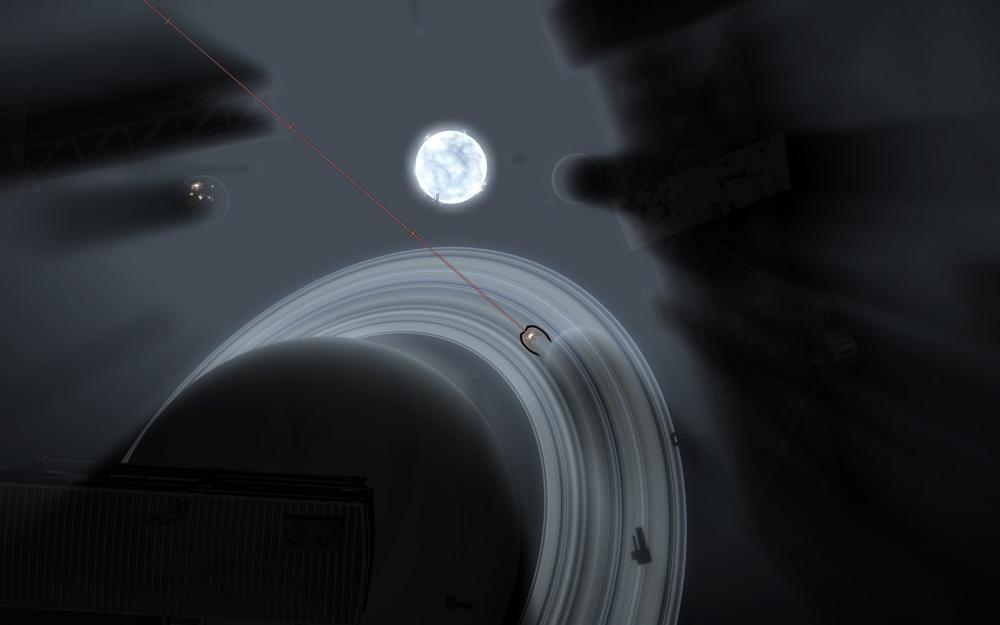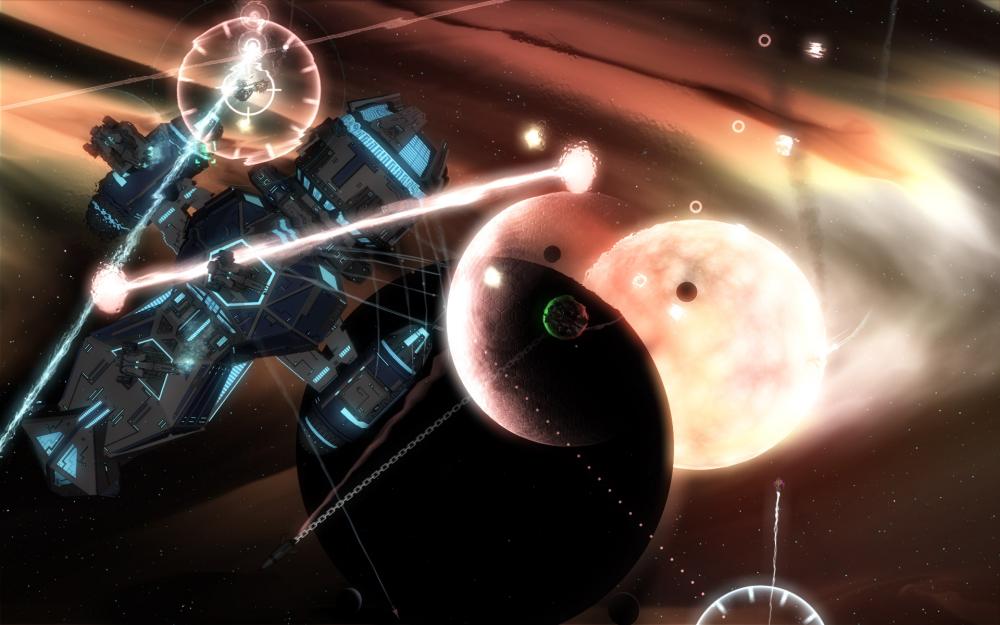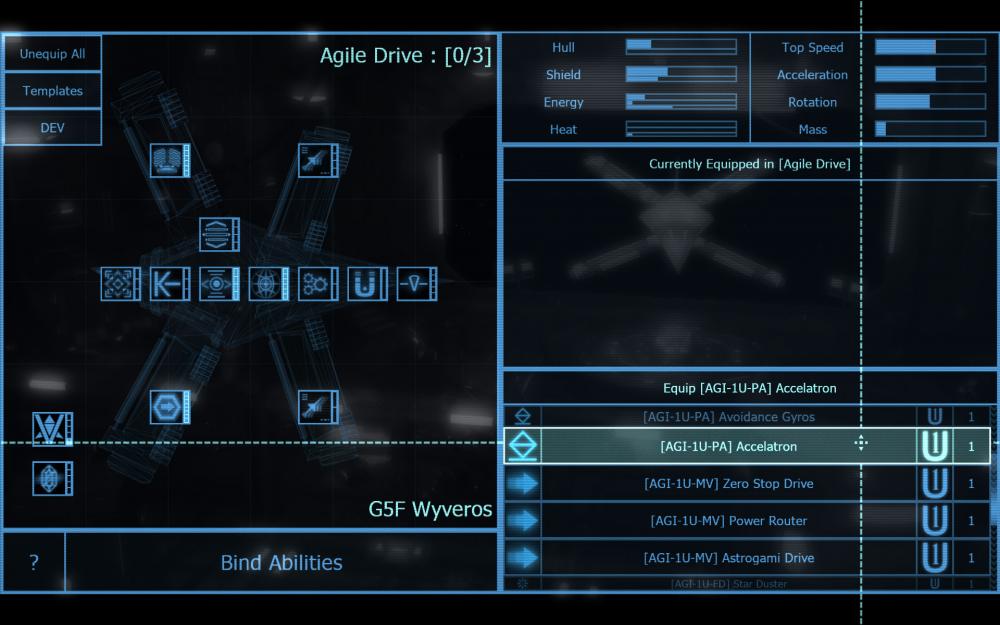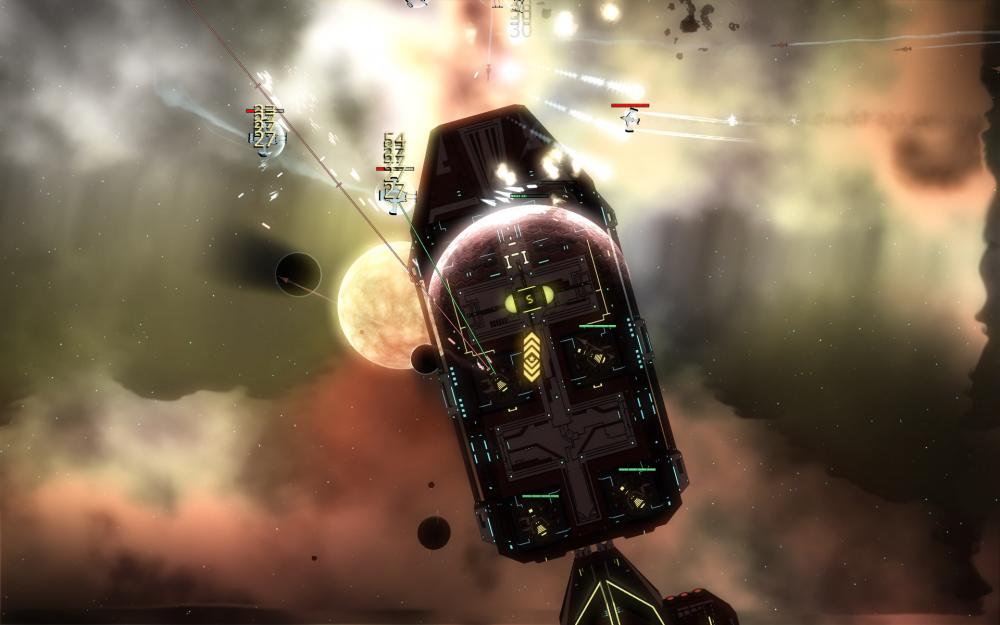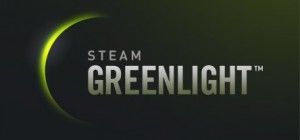Ring Runner: Flight of the Sages is a top-down space shooter that came out several weeks ago and has largely flown under everyone’s radar, at least according to the developer’s Twitter feed. The game has the misfortune of still being stuck in Greenlight limbo, and being released right before the money black hole that is the Steam Summer Sale.
Ring Runner starts out with you escaping a space station after having a snarky AI implanted in your brain. After outrunning the explosion and fighting off mysterious bounty hunters, you embark on a quest to figure out who you are…At least, that was the plan before being captured and caught up in a war between rival factions of space junk collectors. The dialogue ranges from humorous to bizarre, but it is all pretty well-written and the game doesn’t take itself very seriously. The game’s setting clearly has a lot of lore to it; you’ll frequently encounter odd terminology, races, and techno-babble. However, in a refreshing twist, the game never tries to bog you down with all its lore and concepts. You are always given just enough information to piece things together, and never bombarded with pages and pages of codex entries like some other sci-fi games might try to do.
While the game promises an open universe to explore and highly customizable ships, the first nine hours of the roughly 20 hour campaign consists of a linear progression of missions with fixed ships and equipment. This first half of the game largely acts as an (overly) long tutorial, slowly introducing you to the various gameplay mechanics and classes of ships. The pacing of this part of the game is fairly schizophrenic. Sometimes the game will quickly introduce a mechanic one mission and jump to something unrelated the next, while other times the game will drag things out a bit too long. The arena fights in particular went on way too long. On the other hand, these missions do a pretty good job of introducing you to the core play style of the half dozen or so classes of ships. You’ll usually spend around six to eight missions in a basic ship from a particular class before being given a new ship from a different class to play around with.
It isn’t that these missions aren’t any fun, it’s just that the whole first half of the game is rather poorly paced. It takes too long to get to the real meat of the game: exploration and building your own ships. It doesn’t help that these early missions tease you by allowing you to earn hundreds of thousands of plex (aka money) that you can’t spend until many hours later. A new patch a few days ago allows you to skip the tutorial galaxy, but doing so would cause you to miss out on a lot of plex that is needed to research and buy new ship parts.
The game gets pretty addicting when things finally open up. Missions in different systems still follow a rather linear progression path, but now there are more side areas to visit. There is even a place that is full of minigames inspired by old arcade classics like Missile Command and Breakout, and another area that is basically nothing but AI practice matches to help you learn how the multiplayer works.
The ship customization has a lot of depth to it, with around six classes of ships and hundreds of parts. Each ship chassis has bays that you slot parts into, with unique bays depending on the class of ship. For example, fighters have a bay for fixed cannons, while rogues have a bay devoted to their stealth systems. Many parts grant active abilities to the ship. The most obvious of these would be weapons, but there are other active abilities based around evasion, deploying decoys or turrets, backup power systems, spare munitions bays, and so on. You can have upwards of eight active abilities/weapons, four utility abilities, and a couple of special abilities, in addition to a variety of passive perks granted by certain parts.
There is a lot to consider when building ships. Some weapons cost energy and generate heat. Other weapons and abilities consume heat. Some weapons are designed to take advantage of the game’s Newtonian physics. Rockets will travel faster and further depending on your speed. An entire class of ships, the “grapplers,” are built around the game’s physics system. These ships tend to have tractor beams and repulsion fields to pull and push enemy ships into debris, and more advanced ships in the class may have melee weapons like giant flails that follow the ship around and must be “swung” by spinning your ship or slamming on your brakes. The game has a large variety of interesting and fun weaponry, from the physics-based melee weapons to plasma trails that work by venting your ship’s heat.
In addition to the lengthy campaign, Ring Runner also has a pretty good multiplayer component…At least, in theory. I could never find anyone to play with to really test the multiplayer, which seems to be a common issue for the handful of people who own the game. Ring Runner just simply hasn’t sold enough copies to build an active multiplayer community. The game has the usual selection of deathmatch and team deathmatch, but the developers are working on more, like a Dota-style lane pushing mode. It’s a shame, because I think the game’s solid combat mechanics and deep ship customization could make for a great multiplayer experience. Perhaps a Steam release would give the multiplayer community the boost it really needs, which is all the more reason to visit the game’s Greenlight page.
There is a lot of enjoyment to be found in Ring Runner: Flight of the Sages, even with the rather poor pacing of the first half of the campaign and the sadly nonexistent multiplayer community. While the developers recently introduced the option to skip the first part of the campaign, this isn’t really an ideal solution. Its best to just power through to get to the really good stuff. Ring Runner has really fun combat and an extensive ship building component to give you many hours of enjoyment for the $15 price tag. You can find Ring Runner: Flight of the Sages on GOG.com GamersGate, and pretty much every other major digital distributor besides Steam; you’ll have to go visit the game’s Greenlight page to get a Steam release.

